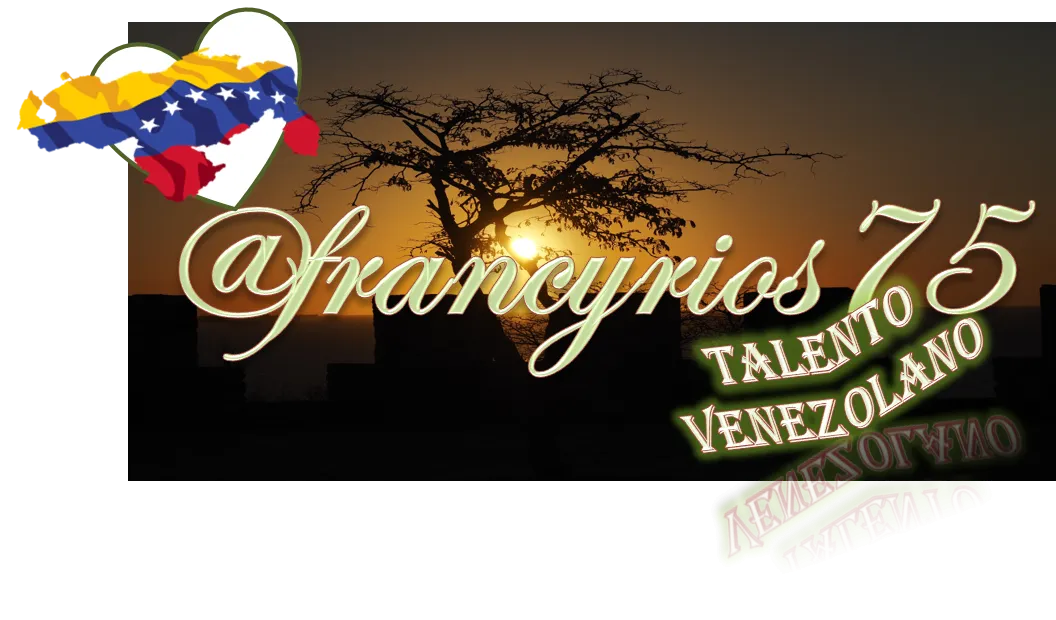Welcome Dear Photography Lovers
Bienvenidos Queridos Amantes de la Fotografía
Surely, like me, some of you at least at one point in your life, victim of a Cupid's crush, have found yourself reciting the following words.
"He loves me, he loves me not, he loves me, he loves me not..." as they pluck a Daisy.
“Me quiere, no me quiere, me quiere, no me quiere…” mientras deshojan una Margarita.
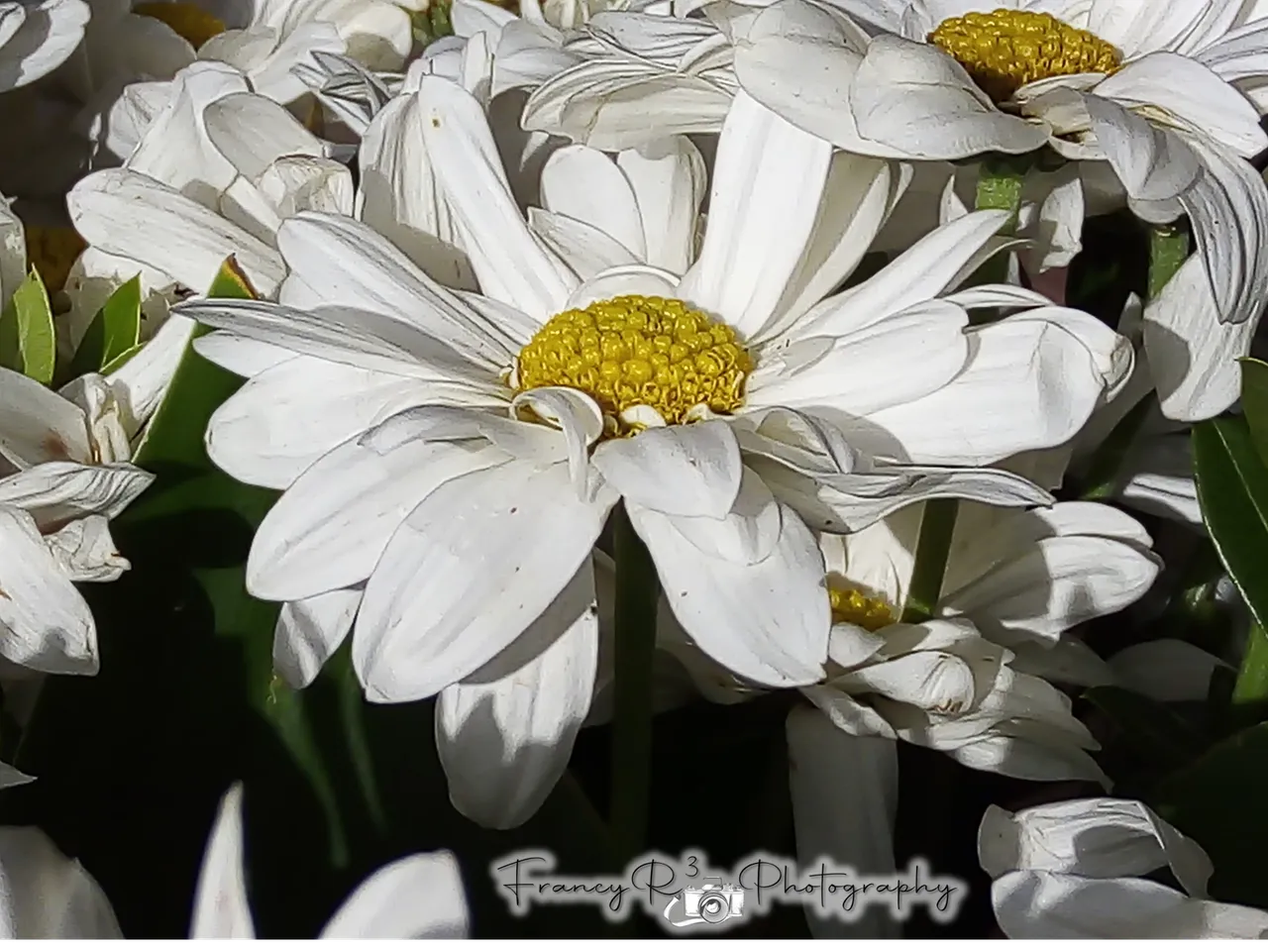

Esta costumbre y su sublime encanto le ha permitido a las Margaritas, adueñarse del corazón de muchos ganando gran popularidad y permitiéndole hoy día, encontrase diseminada alrededor por todo el mundo. Esta planta de origen europeo, gracias a su sublime belleza y sencillez, con el tiempo se le ha asociado con muchos significados, esto dependiendo del su color. Pero, en el caso de la que hoy les muestro se asocia normalmente, con cualidades como inocencia y pureza.
This custom and its sublime charm has allowed Daisies to take over the hearts of many, gaining great popularity and allowing them to be spread around the world. This plant of European origin, thanks to its sublime beauty and simplicity, over time has been associated with many meanings, depending on its color. But, in the case of the one I show you today, it is normally associated with qualities such as innocence and purity.

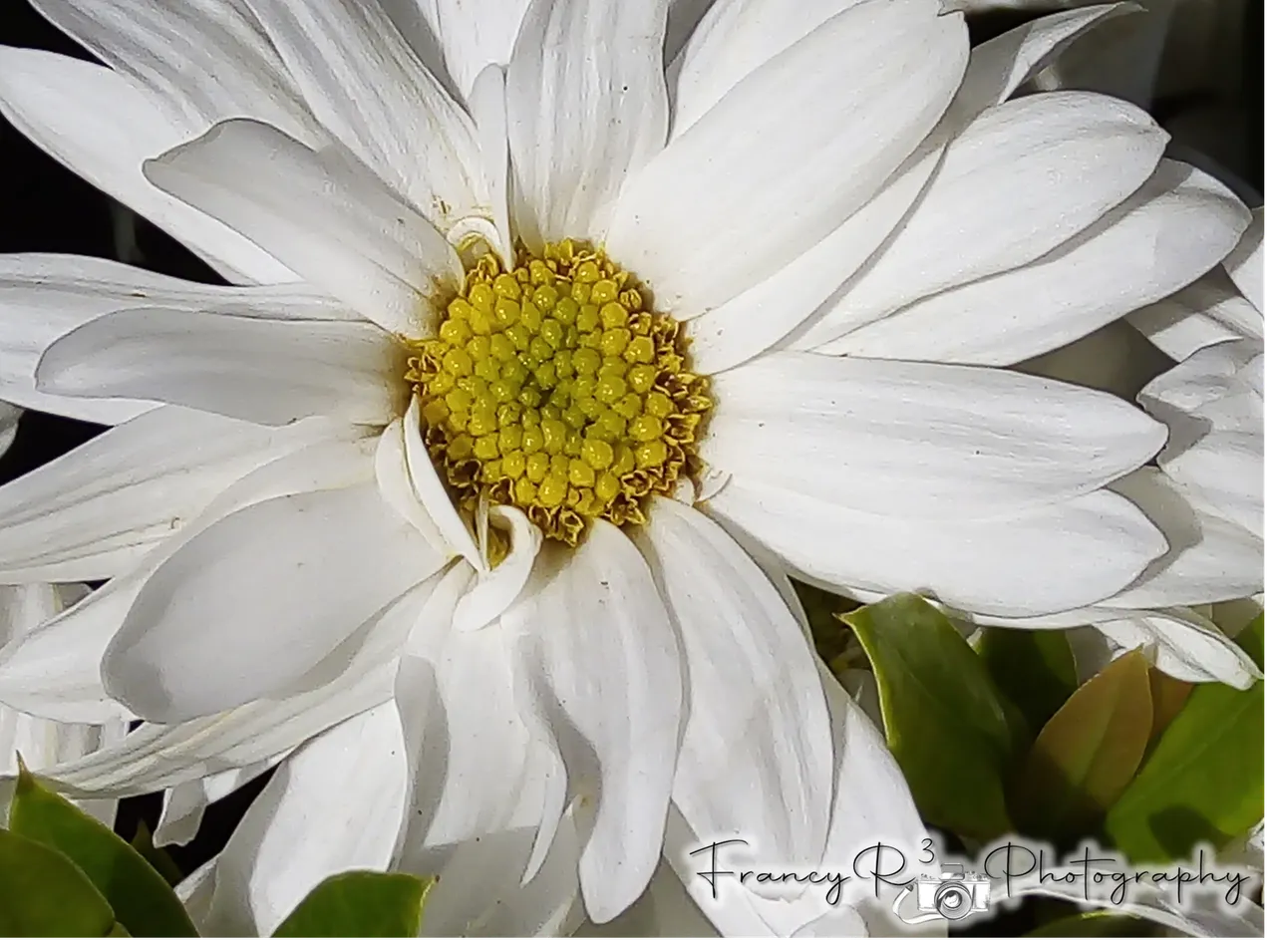

Gracias, a su popular uso a nivel ornamental, y su facilidad de cultivo y mantenimiento, en la actualidad, contamos con aproximadamente 25.000 especies distintas de esta planta herbácea perenne, perteneciente a la familia de las Asteráceas. Ahora, la especie en particular que hoy les muestro es conocida científicamente, como Leucanthemum Vulgare, y pertenece específicamente al género Leucanthemum, que agrupa en total a 70 especies.
Thanks to its popular ornamental use, and its ease of cultivation and maintenance, we currently have approximately 25,000 different species of this herbaceous perennial plant, belonging to the Asteraceae family. Now, the particular species that I show you today is scientifically known as Leucanthemum Vulgare, and belongs specifically to the genus Leucanthemum, which groups together a total of 70 species.

En cuanto a sus características, es una planta de raíces perennes, que crece erguida y dependiendo de la especie, la altura de su leñoso tallo puede variar entre 0,5 metros y 1,5 metros. Por otro lado, sus hojas basales, de forma ovalada y bordes dentados, miden entre 5 y 10 cm y se ubicadas de forma alterna, además, son de un color verde brillante y están cubiertas de una especie de vellosidad.
As for its characteristics, it is a perennial root plant, which grows upright and depending on the species, the height of its woody stem can vary between 0.5 meters and 1.5 meters. On the other hand, its basal leaves, oval-shaped and serrated edges, measure between 5 and 10 cm and are located alternately, in addition, they are bright green and are covered with a kind of hairiness.

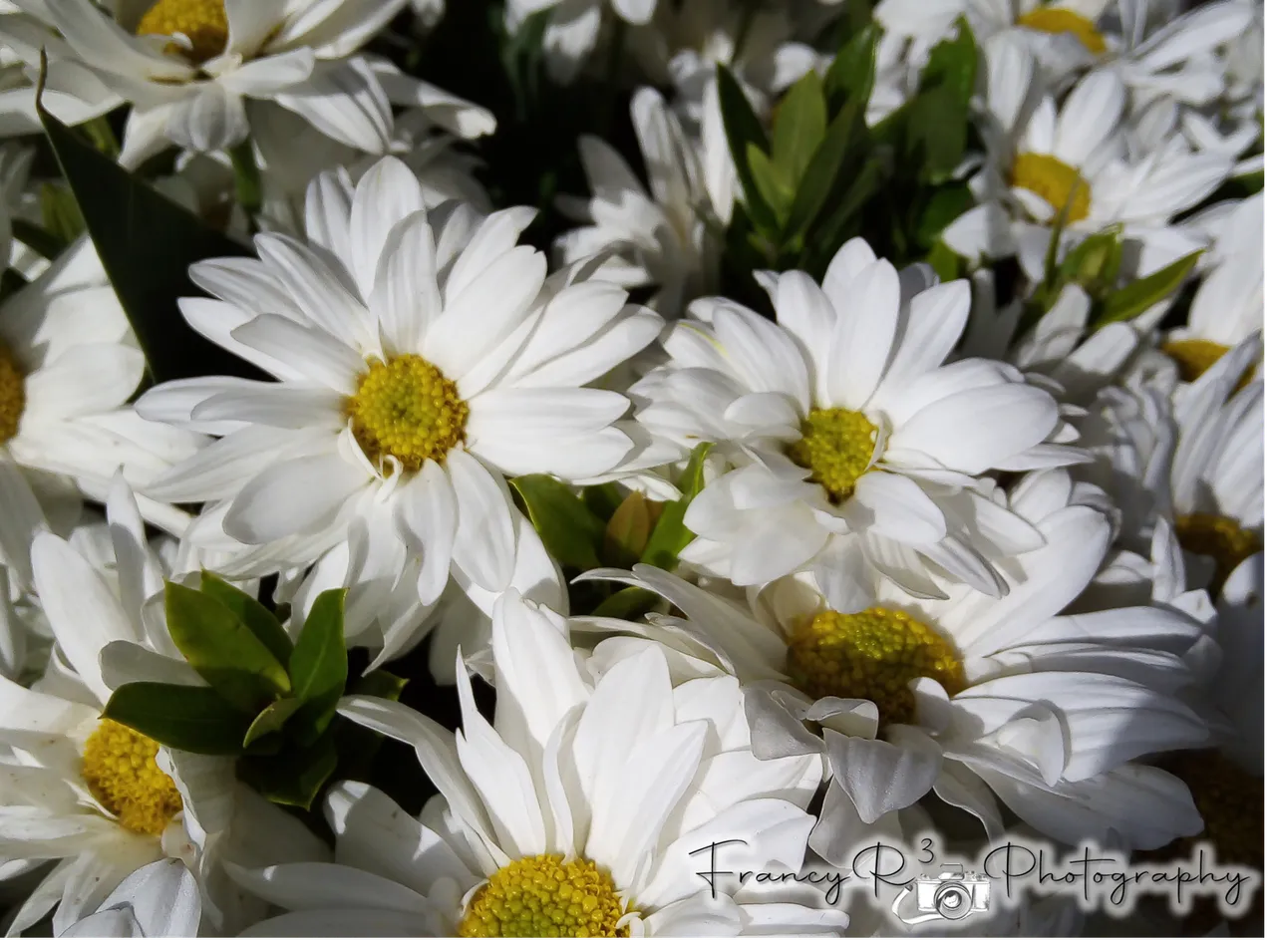

Las Margaritas no solo son hermosa y muy populares, además, tienen una característica peculiar que muy pocos conocen, resulta que lo que conocemos como su flor, no es exactamente una flor. Lo sé, parece increíble, pero es cierto, lo que conocemos como su flor, en realidad es un tipo de inflorescencia solitaria, denominada a nivel botánico como Capítulo. En otros términos, se puede decir, que es una flor que ha evolucionado haciéndose más compleja, esto, debido a que está conformada por muchísimas flores.
Daisies are not only beautiful and very popular, they also have a peculiar feature that very few know, it turns out that what we know as their flower, is not exactly a flower. I know, it seems incredible, but it is true, what we know as their flower, is actually a type of solitary inflorescence, botanically known as a flower head. In other words, we can say that it is a flower that has evolved becoming more complex, this, because it is made up of many flowers.

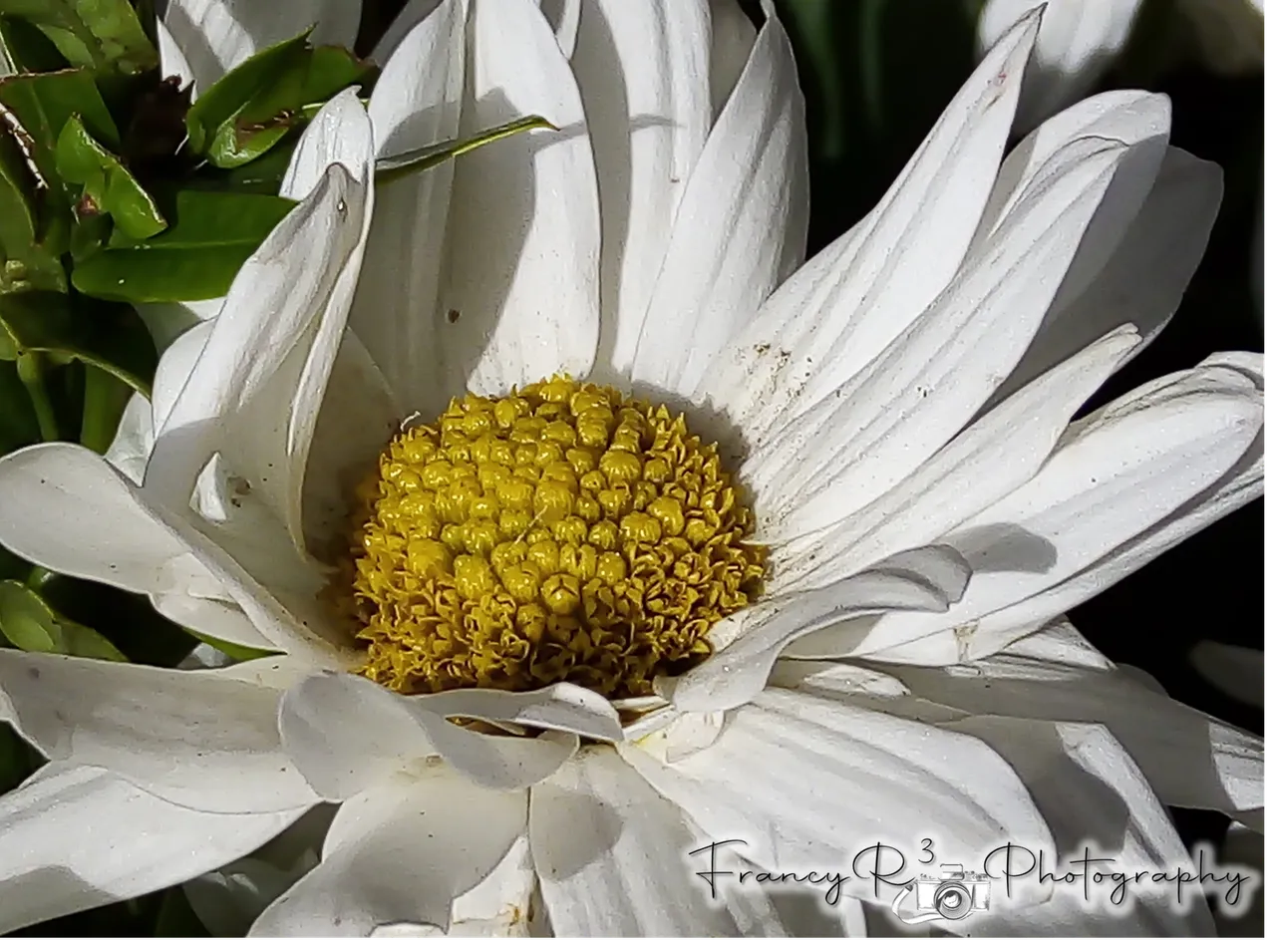

Pero, aclaremos un poco más, esta curiosidad sobre las “flores” de la Margarita, primeramente, deben saber, que los capítulos están conformados por dos tipos de flores. El primer tipo, son cientos de diminutas florecillas hermafroditas de cinco pétalos y de color amarillo, se dispones formando un círculo, sobre el disco floral. El otro tipo de flores, generalmente son femeninas, se denominan Lígula, y se encuentran ubicadas en la parte externa, en torno al radio del disco floral. En el caso de las imágenes que les muestro, son de color blanco y como pueden ver, su forma es similar a la de los pétalos de una flor simple. Pero, debo resaltar, que las margaritas no son las únicas plantas que poseen esta peculiaridad, resulta, que está presente en todas las especies pertenecientes a la familia de las Asteraceae. Plantas como la Lechuga, el Girasol, la Alcachofa, la Manzanilla y el Diente de León, por nombrar solo algunas, comparten esta peculiar característica.
But, let's clarify a little more, this curiosity about the "flowers" of the Daisy, first of all, you should know that the flower heads are made up of two types of flowers. The first type are hundreds of tiny hermaphrodite flowers with five petals and yellow color, arranged in a circle on the floral disk. The other type of flowers, generally female, are called ligule, and are located in the external part, around the radius of the floral disk. In the case of the images I show you, they are white and as you can see, their shape is similar to that of the petals of a simple flower. But, I must emphasize that daisies are not the only plants that have this peculiarity, it turns out, which is present in all species belonging to the Asteraceae family. Plants such as lettuce, sunflower, artichoke, chamomile and dandelion, to name just a few, share this peculiar characteristic.

Bueno llegamos al final de esta nueva entrega sobre las maravillas que nos ofrece la naturaleza, espero que les gustara a todos, especialmente al amigo @adalger, y su equipo de trabajo, ya que, será mi entrada para el concurso de esta semana Amazing Nature Contest - September 2021 - #03. Bueno queridos amigos, no me queda más que despedirme, deseando que tengan una excelente semana y se cumplan todos los proyectos que emprendan. Recuerden cuidarse mucho y cuidar a los suyos poniendo en prácticas las medidas de bioseguridad.
Well we come to the end of this new installment on the wonders that nature offers us, I hope you all liked it, especially my friend @adalger, and his team, as it will be my entry for this week's contest Amazing Nature Contest - September 2021 - #03. Well dear friends, I can only say goodbye, wishing you an excellent week and that all the projects you undertake are fulfilled. Remember to take good care of yourselves and your loved ones by putting into practice the biosecurity measures.

Bibliographic References || Referencias bibliográficas
https://es.wikipedia.org/wiki/Leucanthemum https://es.wikipedia.org/wiki/Leucanthemum_vulgare https://aeac.science/anterior/la-margarita-no-es-una-flor/ https://www.floreshermosas.top/margaritas/ https://www.lysaflores.com/blog/la-margarita/ https://www.unavarra.es/herbario/pratenses/htm/glosario_bot.htm

Contenido y fotografías de mi propiedad intelectual
Información Técnica
| Cámara | Pentax * istDL |
|---|---|
| Lente | * Pentax 18-55 |
| Iluminación | Luz Natural |
| Locación | Barcelona, Estado Anzoátegui, Venezuela |
Content and photographs of my intellectual property
Technical information
| Camera | Pentax * istDL |
|---|---|
| Lens | * Pentax 18-55 |
| Lighting | Natural Light |
| Location | Barcelona, Anzoátegui State, Venezuela |


